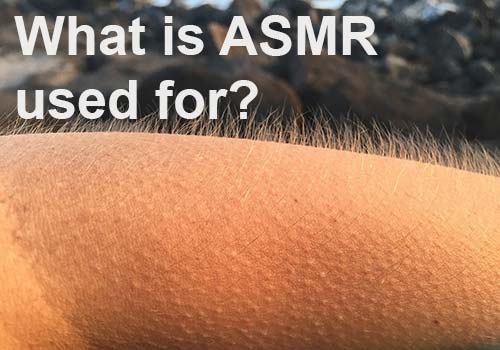What is ASMR used for?

One encounters more and more often so-called ASMR videos and hears people whispering, typing on keyboards or brushing the microphone. Some run away screaming, while others sit back and relax and listen to the sounds.
In ASMR videos, sensory stimuli are specifically stimulated, either by certain sounds, such as whispers or crackling materials, or by visual stimuli, such as hand movements. Some videos also convince through personal attention, in so-called role-plays, such as visiting a hairdresser or doctor. There are no limits to the imagination.
But what happens to those who seem to like and enjoy ASMR?
You can describe it quite simply:
People who have a certain sensitivity towards ASMR content can feel a tingling sensation on the scalp and sometimes also on the back and neck, which feels comfortable, secure and relaxing.
Which sounds, visual or tactile sensory stimuli cause this feeling is as different as the people themselves. Thus, one person feels the smacking as pleasant, while the other is deterred.
In recent years, science has at least been able to carry out some interesting studies on the ASMR effect and draw precisely these conclusions. However, closer investigation is rather difficult, because ASMR is about sensations that not everyone experiences in the same way. For example, no significant physical reactions occurred in subjects who did not experience ASMR either before or during the study.
It is rather a complex emotion that, similar to nostalgia, leads to seemingly opposite sensations: a lowered heart rate (relaxation) and increased skin conductivity (arousal - not sexual).
I like to make the comparison to food:
As different as the taste of food is with us humans, so is the sensation towards sensory stimuli.

